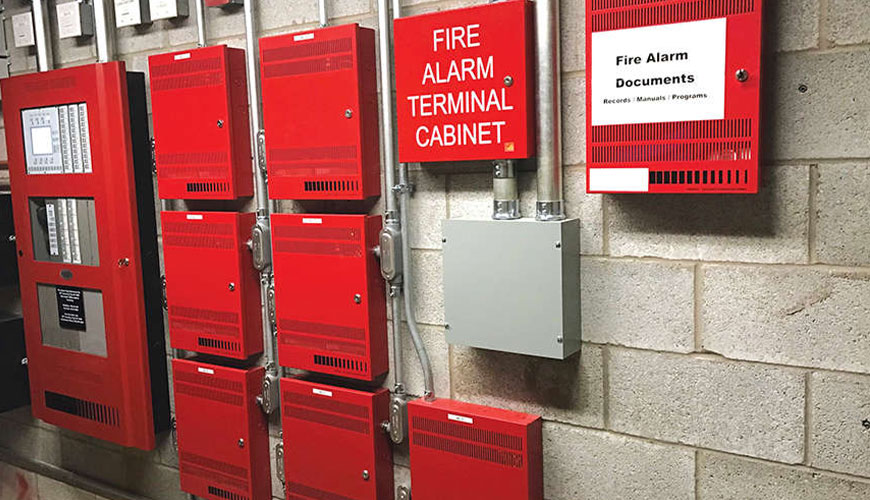

The importance of installing smoke and fire alarms in homes is supported by results from extensive studies of home fires showing that measurable smoke precedes detectable amounts of heat. In other words, smoke often precedes fire.

EUROLAB laboratory provides testing and compliance services within the scope of NFPA 72 standard. NFPA 72 covers application, installation, location, performance, inspection, testing and maintenance of fire alarm systems, inspection station alarm systems, public emergency alarm reporting systems, fire warning equipment and emergency communication systems (ECS), and their components.
NFPA 72 Standard Scope
NFPA 72 covers application, installation, location, fire performance, inspection, testing and maintenance, alarm systems, inspection station alarm systems, public emergency agency alarm reporting systems, fire alarm equipment and emergency communication systems (ECS) and their components.
NFPA 72 Standard Purpose
Signal initiation, transmission, notification and announcement, performance levels and various reliability make up fire alarm systems, surveillance station alarm systems, general emergency communication systems and their components.
Application of the NFPA 72 Standard
Classification of Alarm Systems: Fire alarm systems are classified as home and protected facilities (local) systems. Supervision station alarm systems are classified as central, remote control, proprietary supervision systems. General emergency reporting systems are classified as local energy type and extinguisher type auxiliary alarm systems.
Classification of Emergency Communication Systems: One-way emergency systems are classified as distributed receiver collective notification, indoor fire emergency sound or alarm communication, indoor collective notification, large area mass notification systems. Two-way emergency communication systems are classified as indoor emergency communication systems.
NFPA 72 Inspection, Testing and Maintenance
In today's virtual world, the days are coming when control equipment will be programmed remotely (off site). A requirement has been added that clarifies that a qualified representative must be present at the protected facility to run the re-acceptance testing following site-specific software revision when performing remote programming.
NFPA 72 Initializing Devices
NFPA 72 release 2022 adds this requirement back to the code after it was deleted during the last loop. It will also need to be labeled to identify the functions of the remote alarm and supervisory indicators, as well as any equipment associated with the starting device.
NFPA 72 Notification Devices
NFPA 72 has long required that the word "fire" not be in the public domain of notification devices used to notify building occupants of non-fire related events. This requirement remains unchanged; however, flexibility has been added to the code in allowing field changes in marking as long as it is completed according to the manufacturer's published instructions or a permanent mark is placed next to the notification device indicating the multipurpose use of the device.
NFPA 72 Protected Facilities Alarm and Signaling Systems
There are new requirements regarding remote access to fire alarm or signaling systems by remote programming. This outlines the terms for allowing complete testing, maintenance, diagnostics, and remote access to software upgrades. Other than remote diagnostics, other activities mentioned above will require qualified onsite personnel.
NFPA 72 Single and Multi-Station Alarms and Home Signaling Systems
Concerning the placement of smoke alarms and smoke detectors near cooking appliances, smoke alarms or smoke detectors installed between 10 and 20 feet along a horizontal flow path from a fixed or fixed cooking appliance should have a transit time before state-of-the-art technology is required to be applied. Effective May 1, 2022, smoke alarms and smoke detectors will need to be listed for resistance to nuisance cooking-related alarms. Similarly, a transit time applies to smoke alarms and smoke detectors installed between 6 and 10 feet radially from the cooking appliance. Before May 1, 2022, devices must use photoelectric sensing or be listed for resistance to nuisance cooking alarms and comply with these alarms on/after May 1, 2022.
As Eurolab, it provides testing services to companies by determining the analysis and use of smoke and fire alarms in homes within the scope of the NFPA 72 National Fire Alarm and Signaling Code standard.
To get an appointment, to get more detailed information or to request an evaluation, you can ask us to fill in our form and reach you.